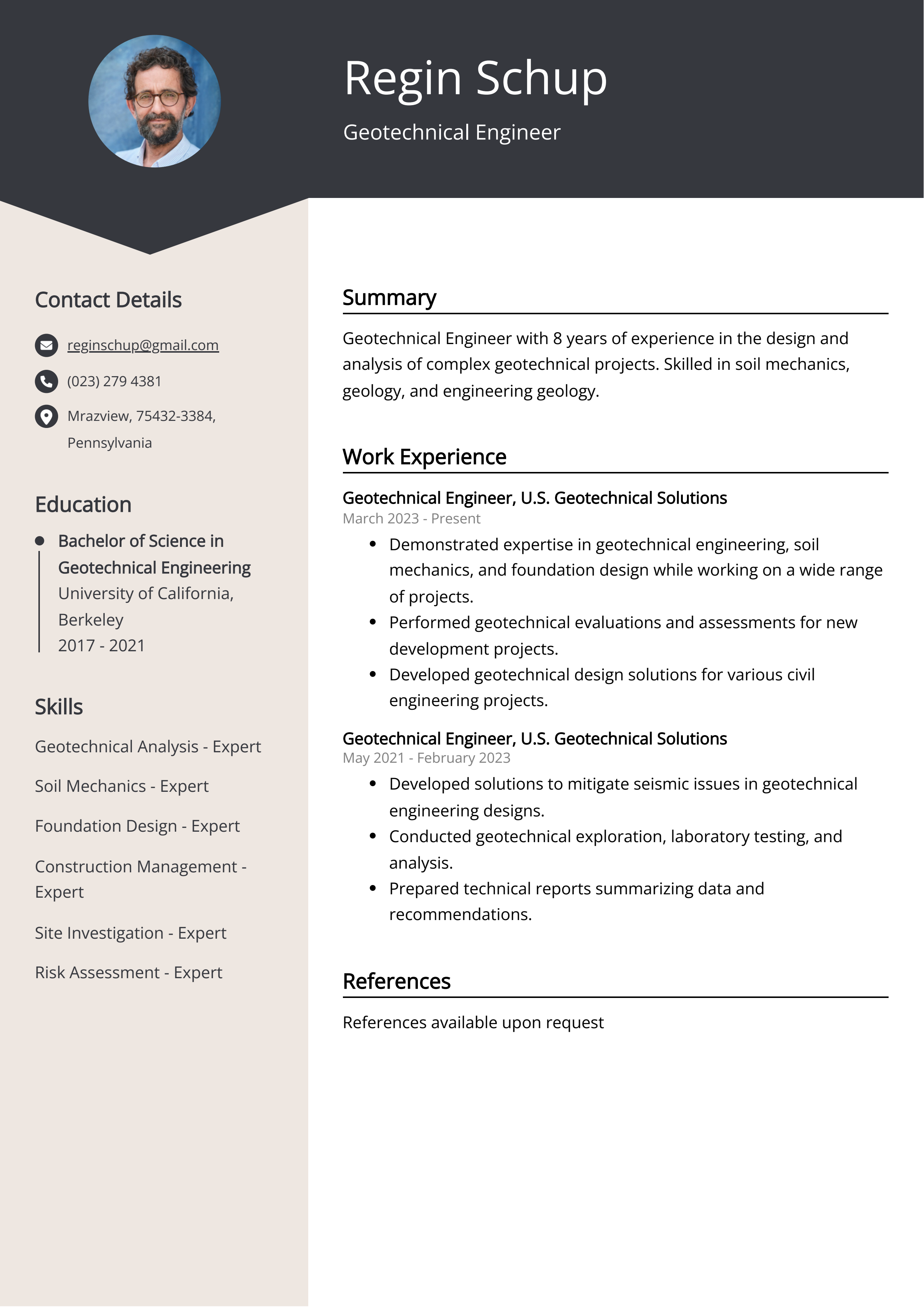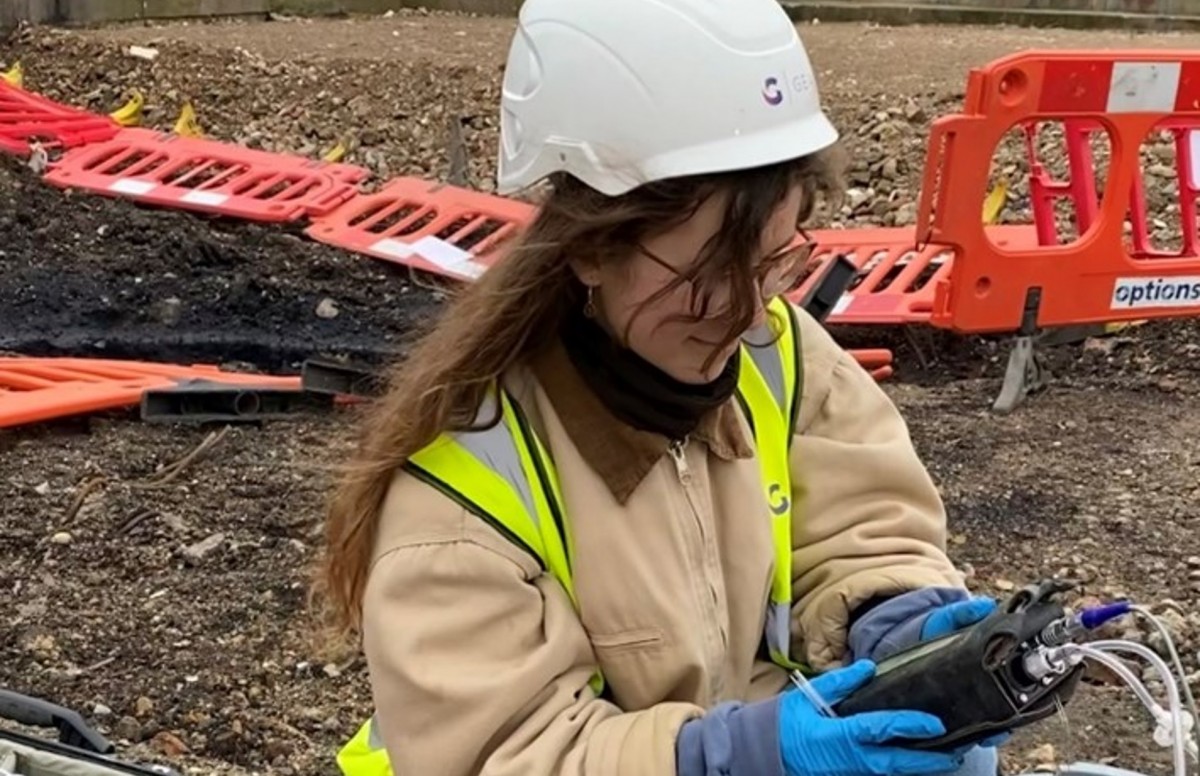Not known Factual Statements About Geotheta
The Definitive Guide for Geotheta
Table of ContentsAll about GeothetaUnknown Facts About GeothetaSome Known Incorrect Statements About Geotheta An Unbiased View of GeothetaGeotheta for Beginners

They conduct site investigations, gather examples, perform laboratory examinations, and evaluate information to assess the viability of the ground for construction jobs - Consulting Engineer. Based upon their findings, geotechnical designers give recommendations for structure style, incline security, retaining structures, and reduction of geotechnical hazards. They team up with various other specialists, such as engineers, structural designers, and building teams, to guarantee that geotechnical factors to consider are incorporated into the general project style and application
By examining the actions and residential properties of dirt and rock, they can determine possible geotechnical threats such as landslides, soil negotiation, or slope instability. Their expertise aids prevent failings or accidents that can endanger lives and residential or commercial property. Below are some in-depth tasks and obligations of a geotechnical designer: Website Examination: Geotechnical designers conduct website investigations to gather data on subsurface problems.
They interpret the data to recognize the buildings and habits of the dirt and rock, including their strength, leaks in the structure, compaction characteristics, and groundwater problems. Geotechnical Analysis and Design: Geotechnical designers examine the data accumulated throughout website investigations to assess the stability and suitability of the website for construction tasks. They perform geotechnical computations and modeling to evaluate elements such as bearing capacity, negotiation, slope stability, side earth stress, and groundwater flow.
The smart Trick of Geotheta That Nobody is Discussing
Foundation Layout: Geotechnical engineers play a vital duty in making foundations that can safely sustain the intended framework. They assess the dirt problems and tons requirements to determine the ideal structure kind, such as superficial foundations (e.g., grounds), deep structures (e.g (https://www.abnewswire.com/companyname/geotheta.com_139529.html#detail-tab)., heaps), or specialized methods like dirt renovation. They think about factors such as negotiation restrictions, bearing ability, and soil-structure communication to develop ideal structure styles
They examine building and construction strategies, display site tasks, and perform field evaluations to confirm that the design referrals are complied with. If unforeseen geotechnical issues arise, they analyze the circumstance and give recommendations for remediation or changes to the style. Threat Evaluation and Reduction: Geotechnical engineers assess geotechnical threats and risks connected with the project website, such as landslides, liquefaction, or soil erosion.

Collaboration and Interaction: Geotechnical designers function closely with various other professionals associated with a project, such as designers, structural designers, and building groups. Efficient interaction and cooperation are necessary to integrate geotechnical considerations into the total task layout and construction process. Geotechnical designers provide technical experience, answer questions, and ensure that geotechnical needs are satisfied.
The smart Trick of Geotheta That Nobody is Discussing
Here are some kinds of geotechnical engineers: Foundation Engineer: Structure designers specialize in designing and examining structures for frameworks. They assess the soil conditions, lots needs, and website attributes to establish one of the most appropriate foundation type and design, such as shallow foundations, deep foundations, or specialized techniques like pile foundations.
They examine the aspects influencing slope stability, such as soil homes, groundwater conditions, and slope geometry, and create methods to protect against incline failures and alleviate threats. Quake Engineer: Earthquake engineers specialize in examining and creating structures to hold up against seismic forces. They examine the seismic threat of a site, assess soil liquefaction potential, and create seismic style criteria to ensure the safety and security and strength of frameworks during earthquakes.
They execute field screening, accumulate samples, and evaluate the collected data to characterize the dirt residential properties, geologic formations, and groundwater problems at a website. Geotechnical Instrumentation Engineer: Geotechnical instrumentation engineers concentrate on surveillance and determining the behavior of soil, rock, and structures. They mount and keep instrumentation systems that keep an eye on my company elements such as dirt settlement, groundwater degrees, slope movements, and architectural displacements to assess performance and supply very early warnings of possible problems.
What Does Geotheta Mean?
They perform tests such as triaxial tests, combination tests, straight shear examinations, and leaks in the structure examinations to gather data for geotechnical analysis and style. Geosynthetics Designer: Geosynthetics designers concentrate on the design and application of geosynthetic products, such as geotextiles, geogrids, and geomembranes. They make use of these materials to enhance soil security, strengthen inclines, provide drain solutions, and control erosion.
They tend to be investigatory people, which indicates they're intellectual, introspective, and curious. They are curious, methodical, rational, analytical, and rational. Some of them are likewise social, meaning they're kind, charitable, participating, person, caring, practical, compassionate, tactful, and pleasant - Consulting Engineers.
In the workplace environment, geotechnical designers make use of specialized software application tools to perform estimations, produce styles, and examine data. They prepare records, review job specifications, communicate with clients and group participants, and coordinate task activities. The office setup offers a conducive setting for research study, analysis, and cooperation with various other experts involved in the task.
Indicators on Geotheta You Need To Know
They frequently check out task sites to carry out site examinations, assess geotechnical problems, and gather data for evaluation. These visits include taking a trip to different areas, sometimes in remote or tough surfaces. Geotechnical engineers might carry out soil tasting, conduct tests, and monitor building and construction activities to guarantee that the geotechnical facets of the task are being executed properly.
Geotechnical engineers additionally work in specialized geotechnical laboratories. Geotechnical laboratory engineers work extensively in these settings, taking care of screening equipment, operating instruments, and tape-recording data.